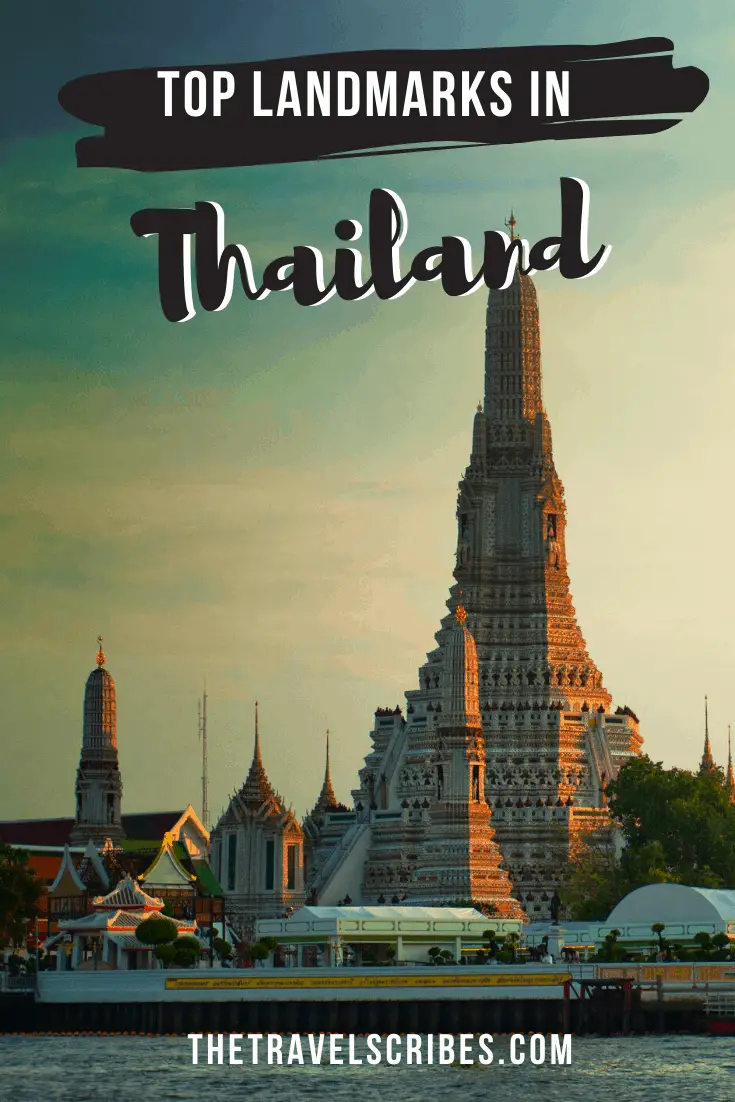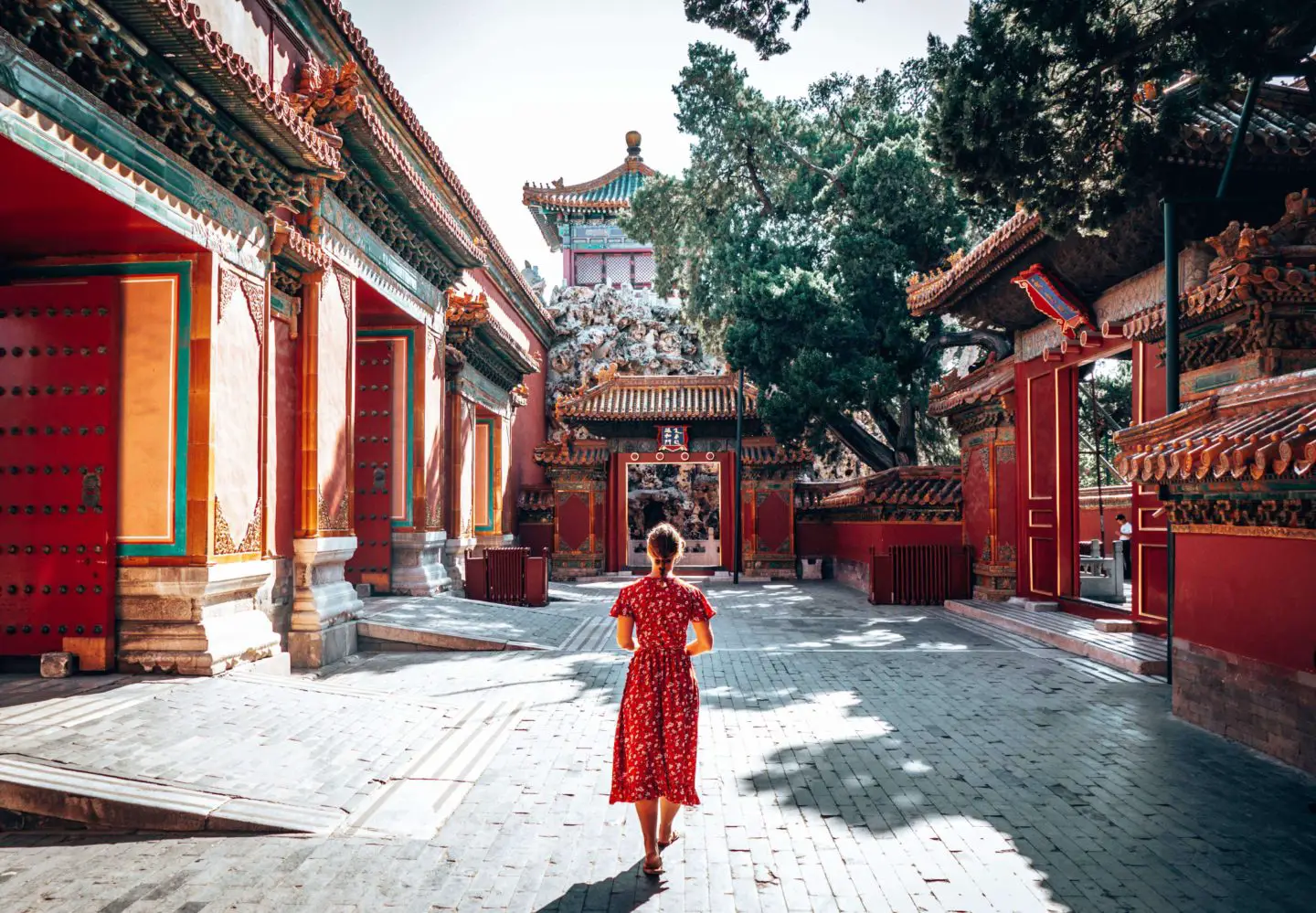It’s known as the Land of Smiles for it’s friendly, beaming people. But Thailand is also a country known for its phenomenal natural beauty, alongside thousands of breath-taking temples, bustling city streets and even it’s sports like muay thai. But, if you had to make a list, what are the top-rated attractions in the country; the best landmarks in Thailand?
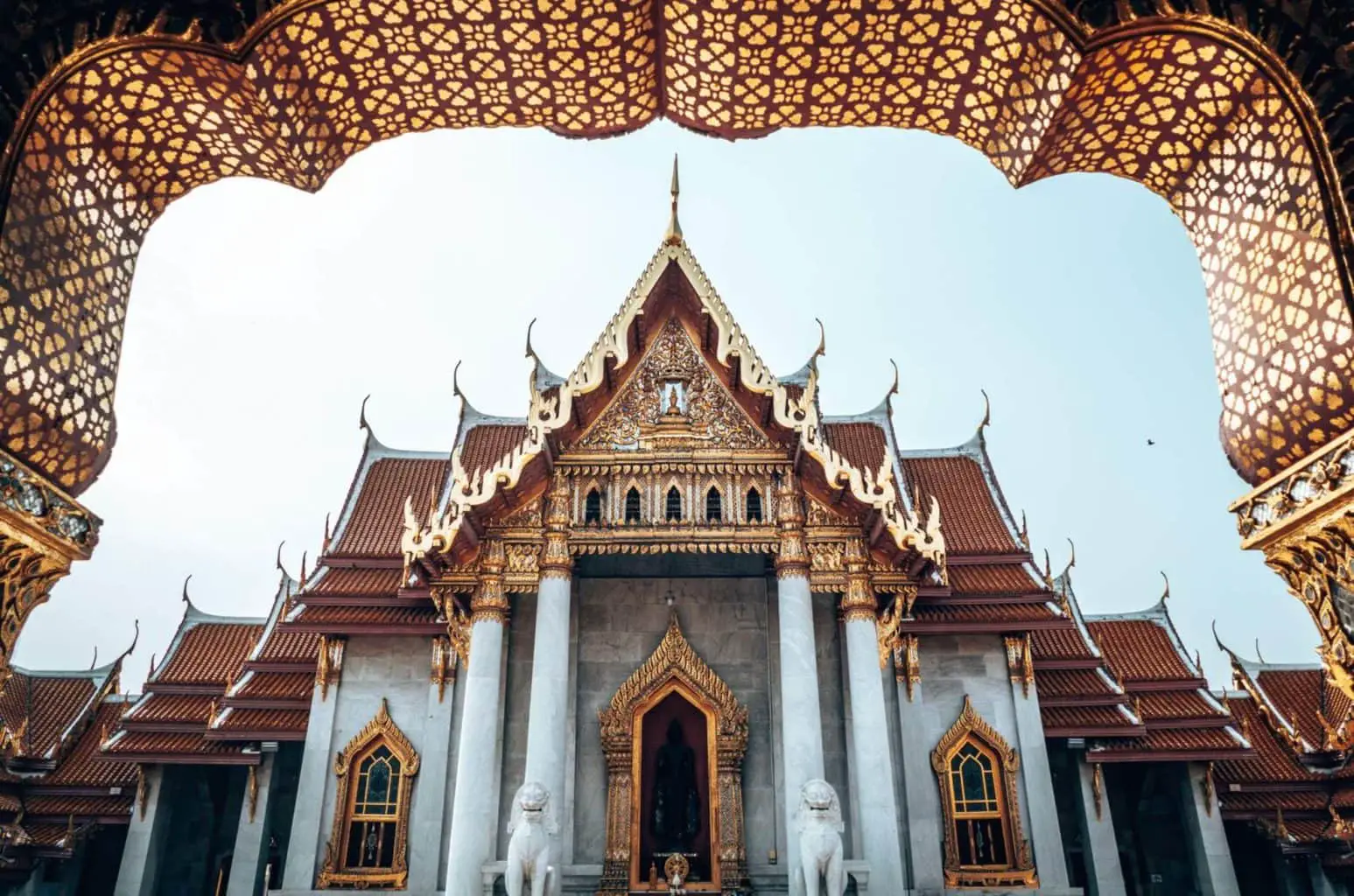
It feels almost impossible to make a list that represents Thailand, it’s just jam-packed with so much to see. So we enlisted a bit of help from some of the globe’s foremost travel bloggers, who each told us about their favourite attraction. Read on for the Top 10 Landmarks in Thailand, alongside a ‘bonus’ list as long as your arm.
Fun fact: The term ‘Siamese twins’ originated in Thailand! When the country was still known as Siam, two brothers – Chang and Eng Bunker – were born joined at the chest. Nowadays we all prefer the term ‘conjoined twins’, in case you’re looking to be politically correct.
Skip ahead
Top 10 landmarks in Thailand
Don’t feel like reading ahead? Here’s a handy list of the most famous landmarks in Thailand.
- Wat Rong Khun (The White Temple)
- James Bond Island
- Khao San Road
- Ancient City of Ayutthaya
- Phi Phi Islands
- Wat Arun (Temple of the Dawn)
- Railay Beach
- Wat Pho (and the Grand Palace)
- Ang Thong Marine Park
- The Similan Islands
Wat Rong Khun (The White Temple), Chiang Rai

Explored by Kieren from Got My Backpack
Wat Rong Khun, better known as The White Temple, is located in the north of Thailand and considered one of the best things to do in Chiang Rai.
Little information exists about the original Wat Rong Khun, but we know that it fell into disrepair and was rebuilt by Chalermchai Kositpipat, a famous Thai artist from Chiang Rai. The current temple is a little over 20 years old and as its name suggests, it’s unique in that everything is white, representing the purity of Buddha.
The building is covered in symbols depicting religious stories and messages. It has been designed to take you on a journey, starting in hell where creepy hands reach out from the ground symbolising human desires such as greed and lust. As you successfully navigate past the clutches of human desire, you’ll pass over a bridge to heaven where you’re able to pray.
The artist clearly didn’t take himself too seriously, look out for the pop culture references hidden in the artwork throughout the temple, including Spider Man, Angry Birds, Michael Jackson and Ronald McDonald.
Read next: What landmarks made it onto the list for the most iconic landmarks around the world?
James Bond Island
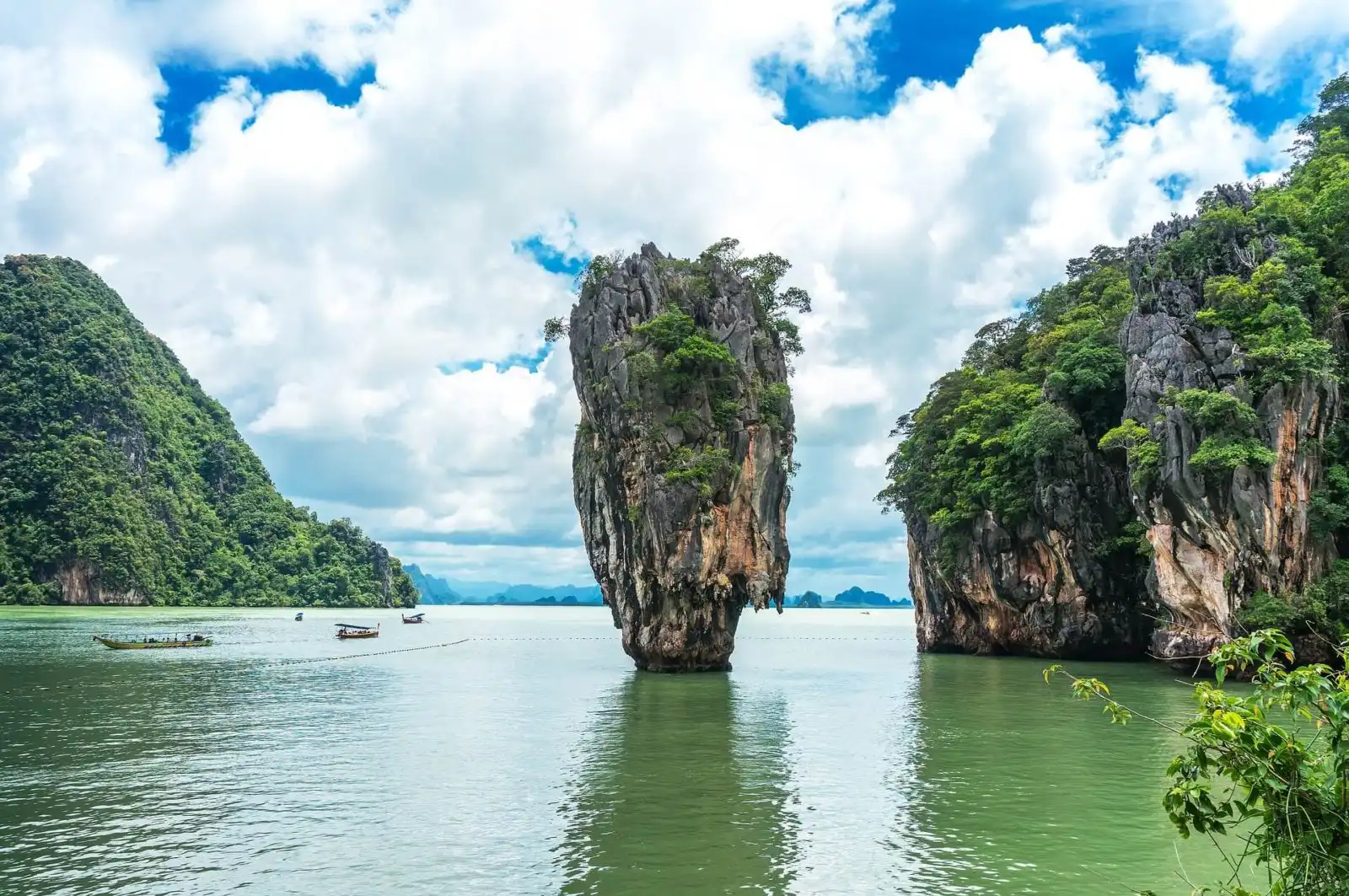
Explored by Trijit from Budget Travel Buff
Striking scenery including towering vertical limestone karsts and emerald green water, James Bond Island is one of the most popular islands in Phuket. The real name of this island is Koh Tapu and it became famous for its appearance in the 1974 James Bond film ‘The Man with the Golden gun’.
Part of Phang Nga Bay and the 100 plus islands in this area, it’s just 40km away from Phuket and often visited as a full or half day tour from Phuket itself.
Insider Tip: James Bond Island, like all the popular beaches of Phuket, can get extremely crowded. Try to get there early in the morning to avoid the crowd. You could also add Hong and Khai islands to your trip.
Khao San Road, Bangkok
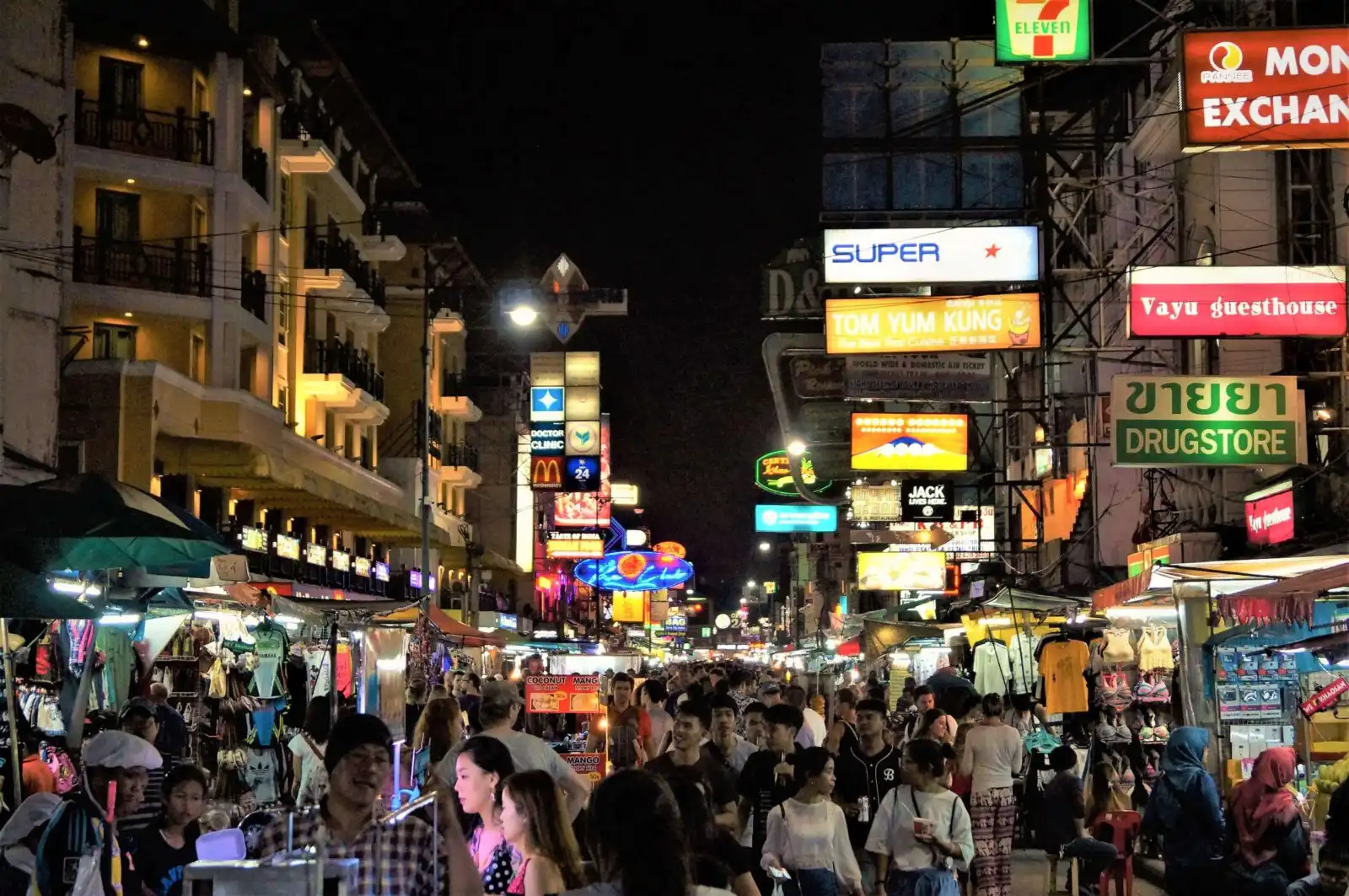
Explored by Jenny from TraveLynn Family
Like moths to a flame, all travellers tend to find themselves drawn to the bright lights of the Khao San Road at some point. Indeed, so many big adventures have begun and ended on this infamous strip and it is an absolute must do for anyone venturing to Thailand. This bustling street makes for some fascinating people-watching and certainly packs a lot into a few hundred metres: colourful hippy stalls, lively bars, food-vendors serving fried scorpion, cheap backpacker hostels.
And if you’re visiting Thailand with kids, you’ll find Th Khao San incredibly family friendly; many restaurants have high chairs and all are welcome to young kids. However, step a few streets away from the chaos and you will stumble upon the quintessential side of Bangkok, a collection of ramshackle laneways, shining temples and antique shophouses.
You could while many an hour away along Th Khao San. Indeed many arrive in the early afternoon to browse the markets (it’s a great place to stock up on T-shirts, sarongs and skirts, as well as souvenirs) and then find themselves still perched on plastic chair, tucking into their third pad thai of the day come closing time. It’s often considered touristy, but the energy is infectious. So embrace the craze of it all and visit this manic landmark of Thailand.
Related: Not keen on the most iconic places, then why not check out these Thai hidden gems!
Ancient City of Ayutthaya
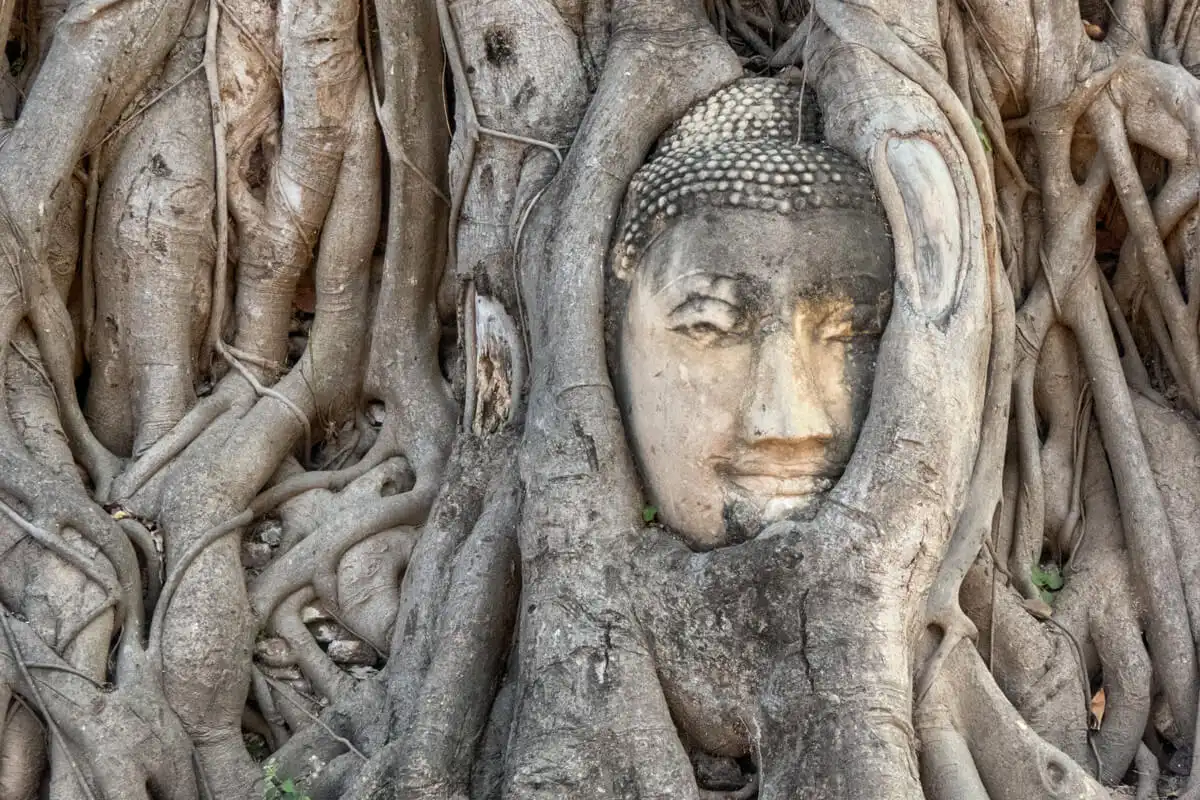
Explored by Bridget from The Flashpacker
Visit the UNESCO World Heritage Site of Ayutthaya for its rich history and its peaceful temples. Think of it as a smaller-scale version of Angkor in Cambodia, minus the crowds.
Founded in 1350, Ayutthaya flourished as the second capital of the Siamese kingdom after Sukhothai, before being razed to the ground by the Burmese in 1767. Although these fires ravaged Ayutthaya’s wooden palaces, they spared its brick and stone temples.
Built in the graceful Sri Lankan and Khmer architectural styles, these temples are magnificent. For example, the achingly beautiful Wat Phra Mahathat features dozens of red brick spires, leaning at precarious angles, and a serene Buddha head cradled in the roots of a Bodhi tree.
Insider tips: To enjoy the serenity of the sites in the absence of day trippers and the laid-back vibe of the modern city, try to stay overnight. You should also take a late-afternoon boat trip to visit Ayutthaya’s riverside temples and to watch the sun set behind Wat Chai Watthanaram
Phi Phi Islands
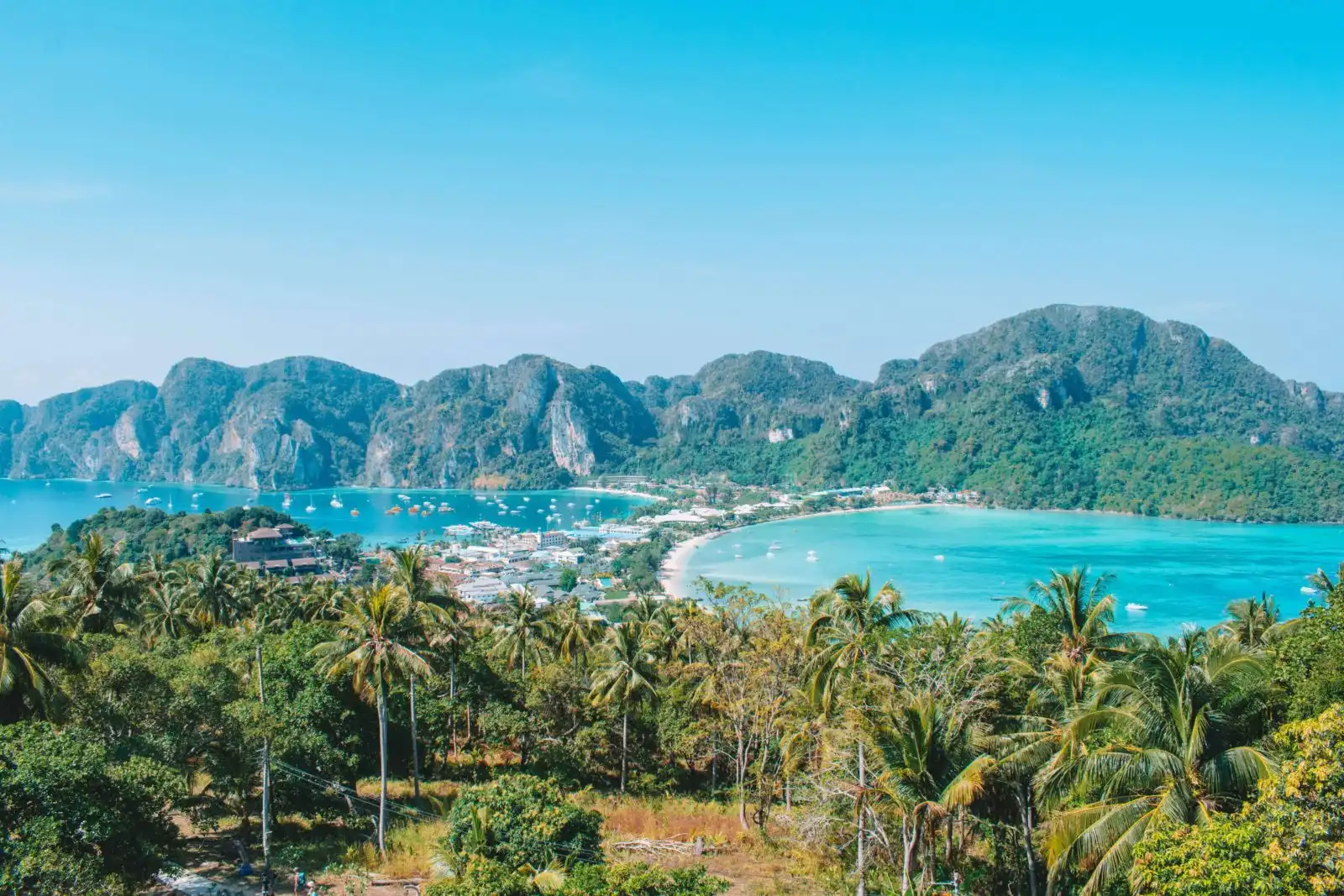
Explored by Greta from Greta’s Travels
The Phi Phi Islands are one of those iconic must-see places in Thailand. Located in the Andaman Sea, the Phi Phi islands are a 2-hour ferry away from the popular tourist destination of Phuket.
The Phi Phi Islands have become a famous tourist destination because of Maya Bay in Koh Phi Phi Lei, the secret lagoon that featured in Leonardo di Caprio’s movie The Beach. Today Maya Bay is closed due to over tourism, with no set plans to open up again, but you can still visit other parts of the Phi Phi Lei and the other Phi Phi Islands, which are just as stunning.
Koh Phi Phi Don, the main island and the only one with a town on it, has some incredible views and beaches. On top of that, the island is entirely pedestrian (no scooters or cars anywhere!) and has a chill and fun vibe. There is a party area in the town if you’re into that, but even if you’re not you can walk around the town in evenings and enjoy some chill bars and restaurants.
From Koh Phi Phi Don you can go on boat trips to the surrounding Phi Phi islands, doing all sorts of fun activities like snorkelling, scuba diving, swimming with luminescent plankton after sundown and just relaxing on board. Even if Maya Bay is closed, the Phi Ph islands are beautiful and worthy of a visit anyway.
Read next: What are the best temples in Chiang Rai?
Wat Arun (Temple of the Dawn), Bangkok
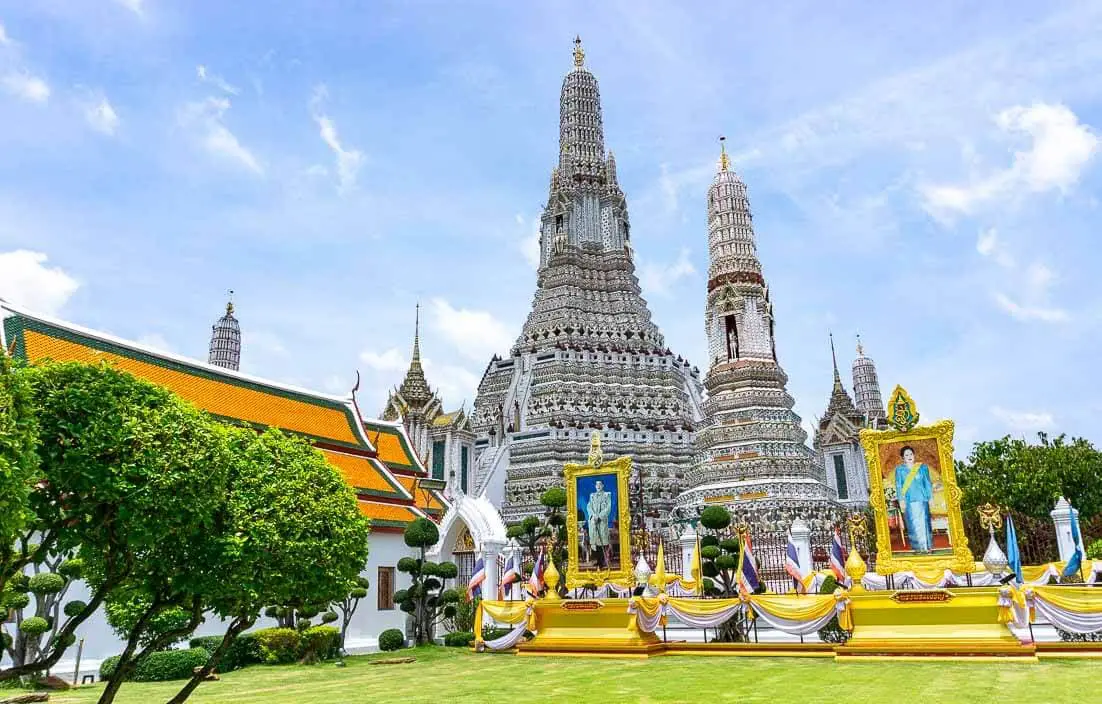
Explored by Melissa from Thrifty Family Travels
Wat Arun (also called the Temple of Dawn), is a stunning Buddhist temple and is one of the most beautiful and most visited attractions in Bangkok. The temple was built in the 17th century and is made up of numerous pagodas all decorated with millions of pieces of coloured tiles. The central pagoda is 82 metres high and is surrounded by four smaller pagodas.
Given this is a popular site in Bangkok, expect lots of tourists in the middle of the day. If at all possible go first thing in the morning or late in the afternoon. In fact its’s meant to be just stunning at dawn or sunset.
You will need to have your knees and shoulders covered to enter the temple, but if you do forget you can hire or purchase sarongs at the entrance.
Entry to the temple is 50 baht (1.70 USD / 1.30 GBP) per person and it is open daily between 8.30 am and 5.30 pm.
Fun fact: Walk around the towers in a clockwise fashion, as doing it anti-clockwise is considered bad luck.
Railay Beach
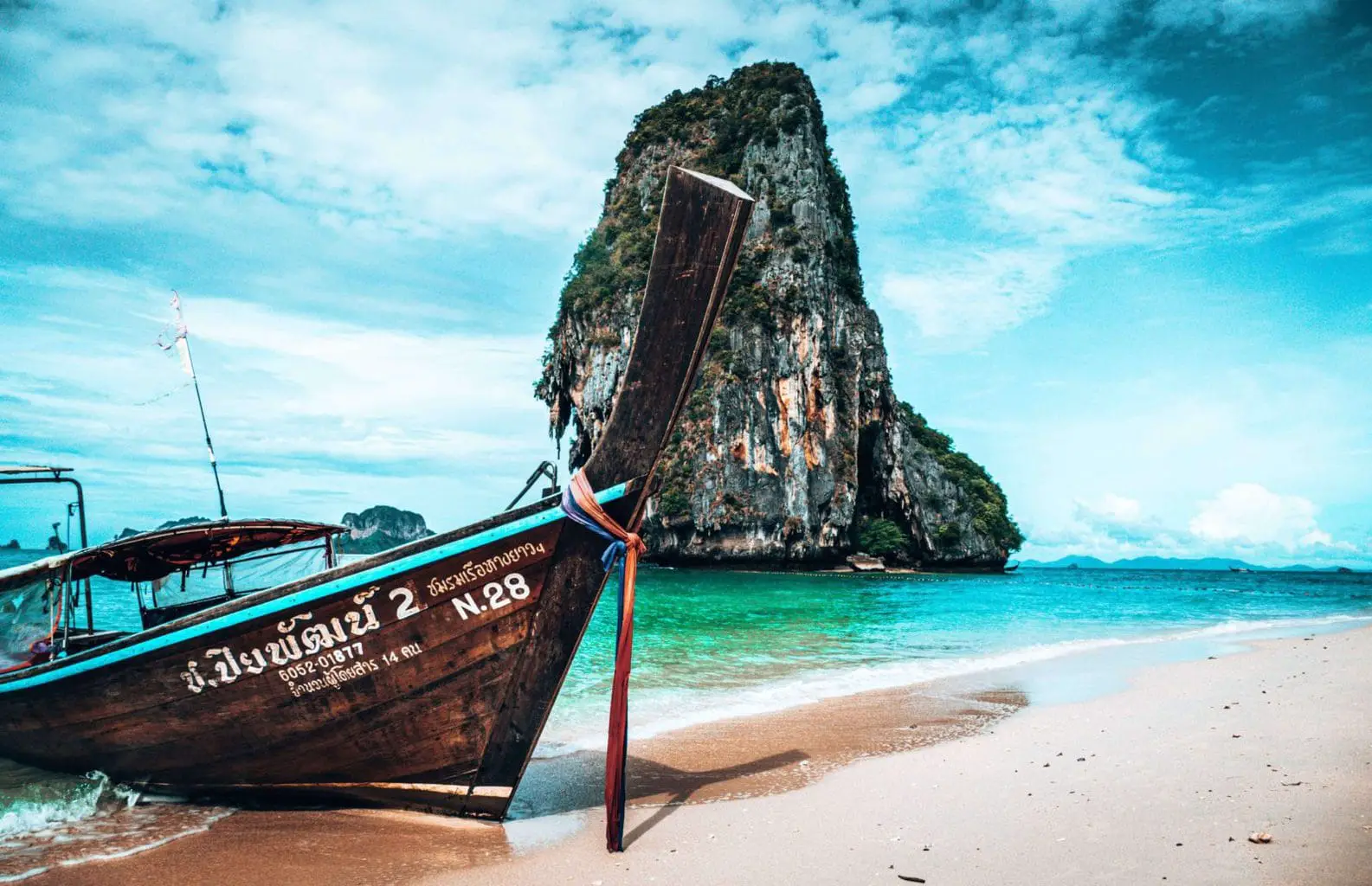
Explored by Loredana from Destguides
One of the most famous beaches in the world, Railay Beach is easily accessible by a longtail boat from either Krabi Town or Ao Nang, which it lies in between. You can also catch a short flight from places like Bangkok to Krabi International Airport if you’re not in the area yet.
Railay Beach is worth a visit and a must for your bucket list as its turquoise water is set against a backdrop of limestone rock formations. Not only that but once you dock at Railay Beach, you can walk over to the other side of the peninsula for a more chilled out vibe, rock climbing and more swimming areas, such as the beach located at the Princess Cave.
Insider Tips: If you’re only doing a day trip, head back earlier in the evening as the longer you wait, the more expensive the boat tickets for the way back get. Consider also visiting this part of Thailand sometime after October as beforehand is the rainy season, and the waters are more cloudy and greener in colour.
Wat Pho (and the Grand Palace), Bangkok
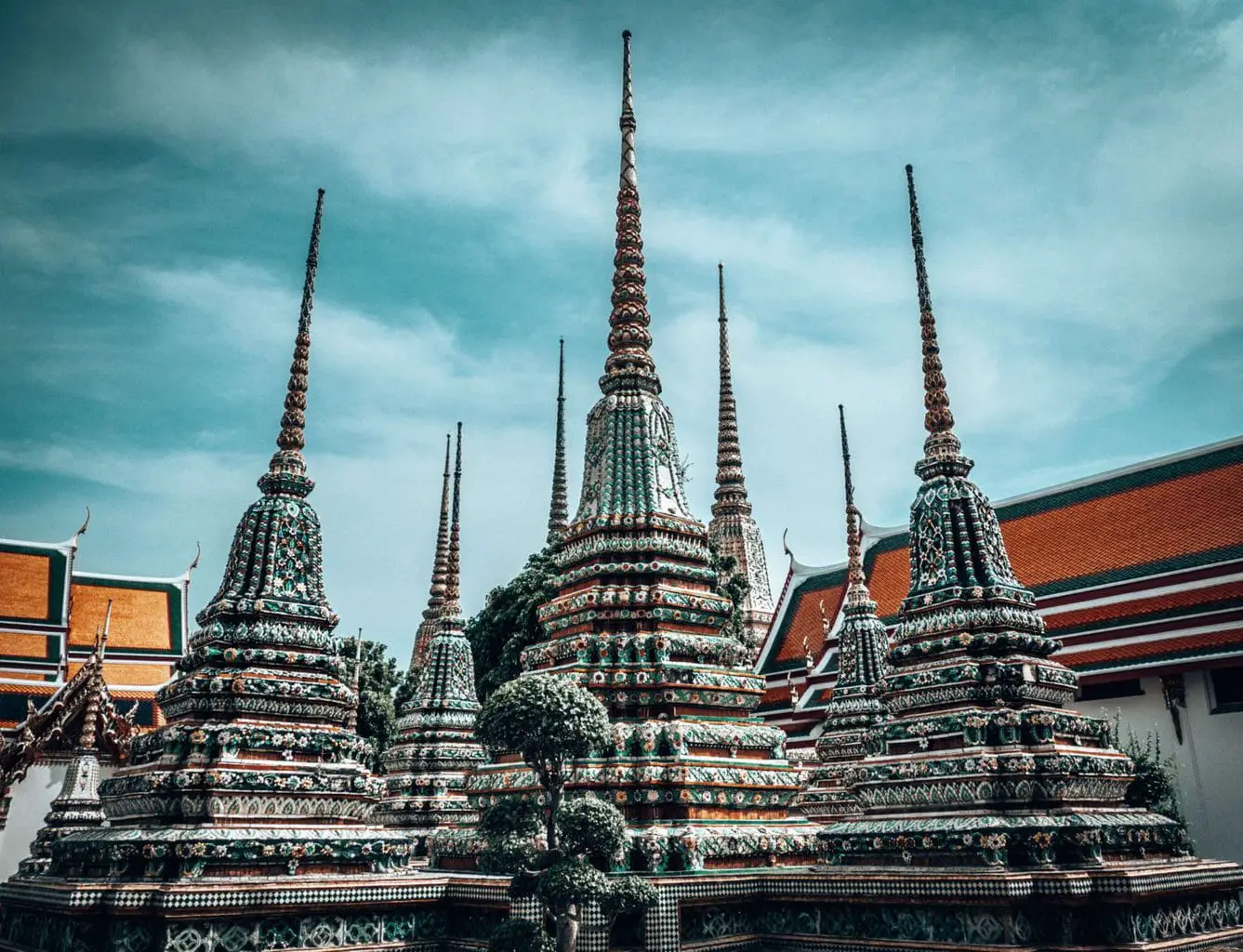
Explored by Alexander from Gourmand Trotter
Wat Pho is one of the most visited temples in all of Thailand, and for a good reason. It’s one of the biggest Bangkok landmarks and features some of the most impressive structures as well as the massive reclining Buddha.
It’s a large complex that can easily be combined with the Grand Palace and Wat Phra Kaew (Temple of the Emerald Buddha), which are located within walking distance from Wat Pho. Furthermore, the temple complex is still a place where you can see genuine Buddhist monks in the early mornings, and it’s also considered to be one of the leading schools for Thai massage.
There are hundreds of impressive statues and you could literally walk around this place for hours. It’s recommended to visit with a local guide who can explain the history and more about each chapel. It’s open daily from early morning until 6:30 pm.
Ang Thong Marine Park
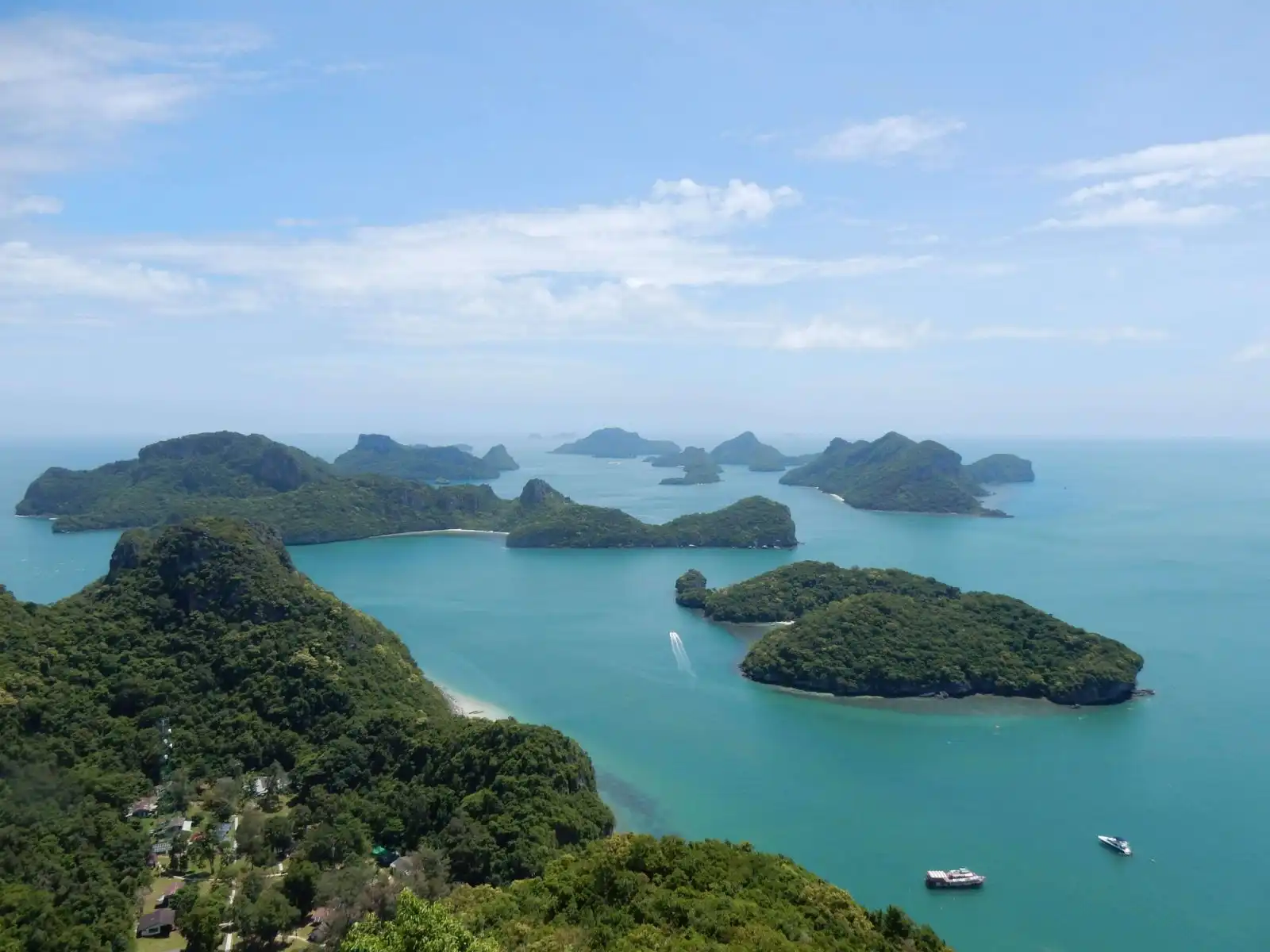
Explored by Steve from The Trip Goes On
The Ang Thong Marine Park is an archipelago of 42 pristine islands close to Ko Samui in Thailand. The area is perfect for kayaking, snorkelling and just lazing on the idyllic beaches as the emerald waters lap at your feet.
If you are feeling fit, you can take a hike up to the 500 metre viewing platform on Ko Wau Ta Lap for expansive views out across the islands. If you prefer to stay at sea-level then take a short hike to the Bua Boke Cave with its impressive array of stalactites and stalagmites.
There is a real life “blue lagoon” on next-door Koh Mae Koh and more pristine beaches which avoid the hordes of day trippers.
Insider Tip: To really get the most out of a visit to Ang Thong, consider staying overnight at the campsite or hire a wooden shack where you can get back to basics and enjoy a piece of tranquillity once the day-trippers leave.
The Similan Islands
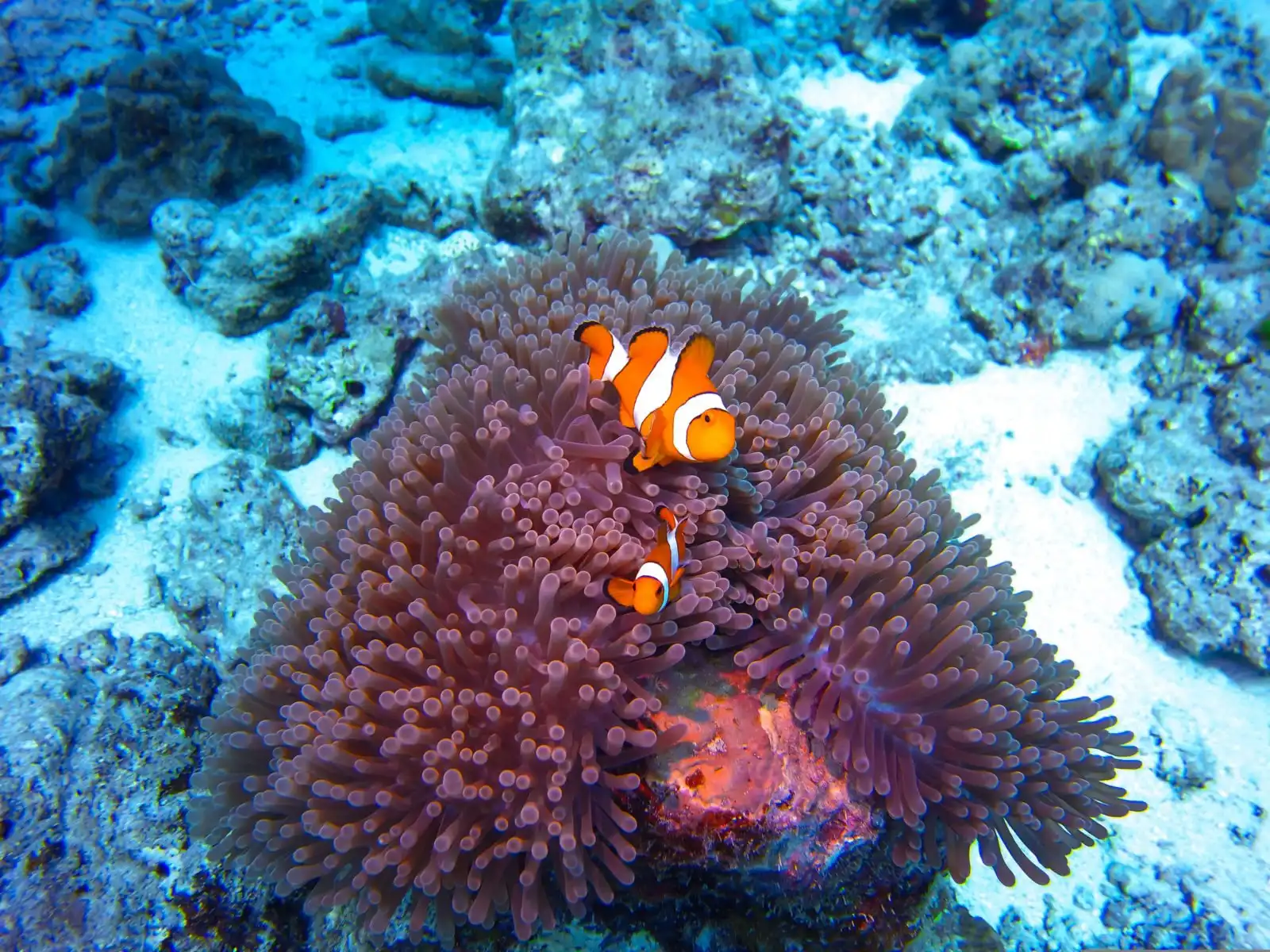
Explored by Lauren from The Travelling Stomach
The Similan Islands, an archipelago located just off the west coast of Phuket, offer some of the best scuba diving sites in the world. Enjoy a few days on a liveaboard taking in all the best dive sites, including Koh Bon and Richelieu Rock.
Wake up early for the sunrise, and hit the water for your first dive before breakfast, with a total of 3-4 dives a day, sometimes including a night dive where you’ll be able to enjoy the otherworldly luminescent underwater creatures. The Similan Islands offer some of the best pelagic diving in the world, and if you’re lucky you’ll spot some oceanic manta rays and maybe even a majestic whale or shark or two.
Ratchada Rod Fai Train Night Market, Bangkok
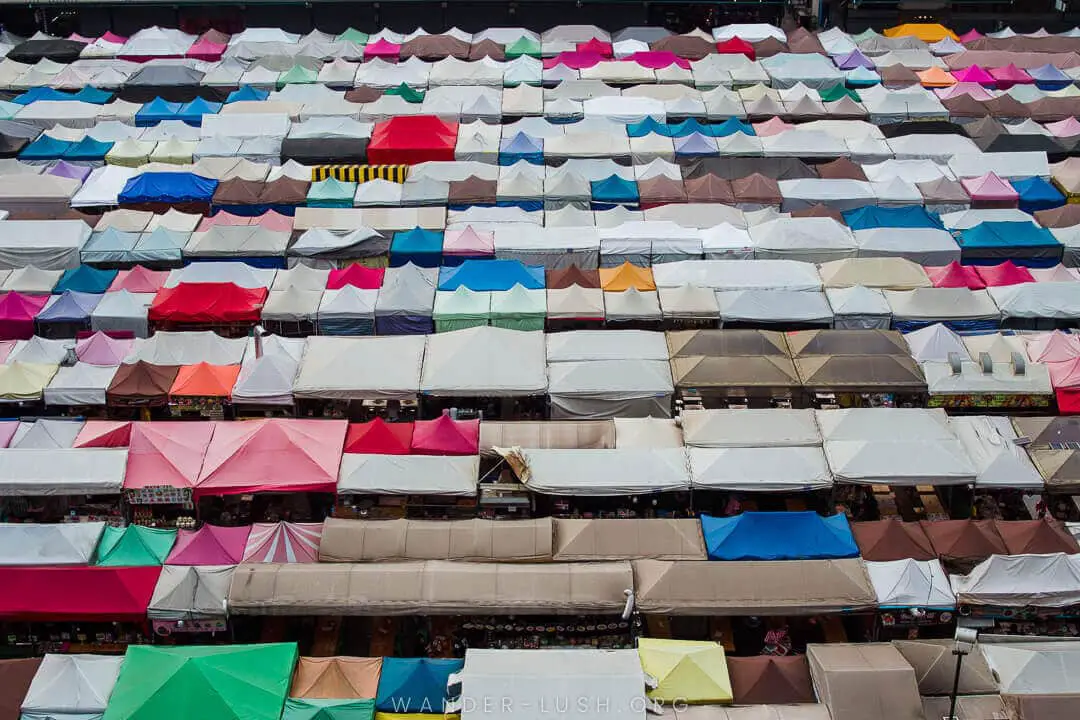
Explored by Emily from Wander-Lush
Thailand is synonymous with market culture – no trip to the country would be complete without visiting at least a few night food markets. The much-photographed Ratchada Rod Fai Train Night Market in Bangkok is one of the most impressive (and Instagrammable) markets in the whole country.
Rod Fai earned its moniker from its original location near the train tracks behind Chatuchak, another popular market. When it moved closer to the city in 2013, the name stuck. The Rachada market is actually Rod Fai’s second branch. It’s central location right next to the Thailand Cultural Center MRT makes it convenient to reach by public transport.
Previously just a weekend affair, it’s now open every night from 5pm. Down on ground level, Rod Fai is a well-organised conglomeration of street food stalls, clothing and homewares vendors set in neat rows. The theme of Rod Fai is ‘retro’ – lots of stallholders specialise in memorabilia, antiques, and vintage-style clothing. At the front of the market there’s a row of trendy bars, some set in shipping containers. Food wise, BBQ seafood (especially shrimp) is the specialty here. Mango sticky rice and sweet crepes are also ubiquitous.
Insider Tip: When you arrive, make a beeline for the nearby Esplanade building. The car park on level four is where you can get that iconic bird’s eye view of the colourful market tents.
Wat Tham Pha Plong, Chiang Dao
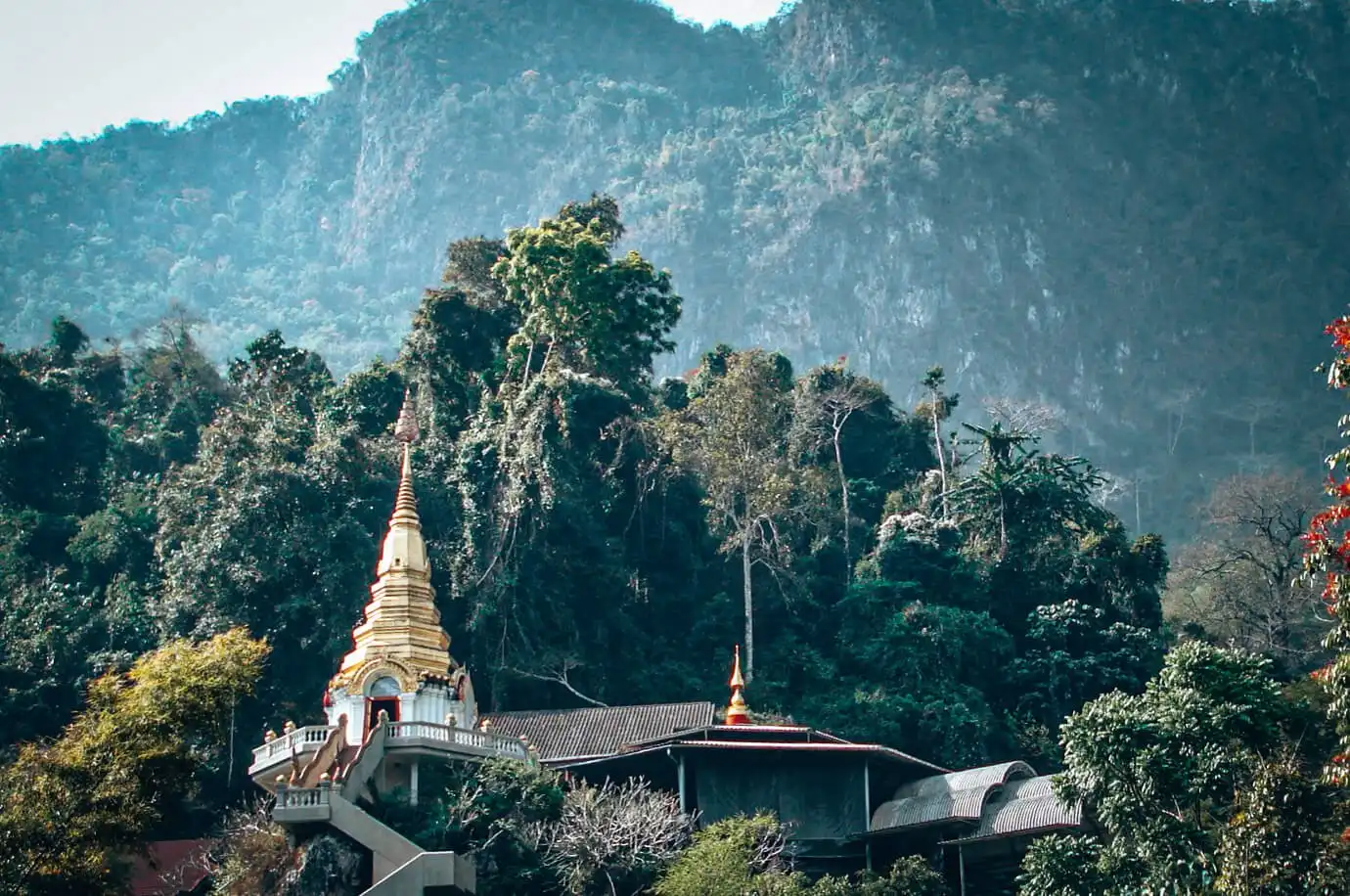
Explored by Heather from Conversant Traveller
This cave temple is special because it’s a bit off the beaten tourist track, and you won’t find it splashed all over Instagram, despite being in a beautiful position with stunning mountain views all around.
Perched on the side of the famous Doi Luang Chiang Dao mountain, Wat Tham Pha Plong is a highlight of any visit to the region. As with many temples in Thailand, there are a lot of steps up the hillside to negotiate (500 in fact), but the monks who live here have helpfully put motivational signs with Buddhist sayings along the way, including one telling hikers “do not grumble when you suffer, just persevere”.
Visiting the temple is one of the most serene experiences you can have in Thailand, and with few other visitors it feels truly authentic. After the climb you can sit and meditate in the cool cave, or admire the golden stupa glowing in the sun and chat to any monks who may be present.
Sanctuary of Truth, Pattaya
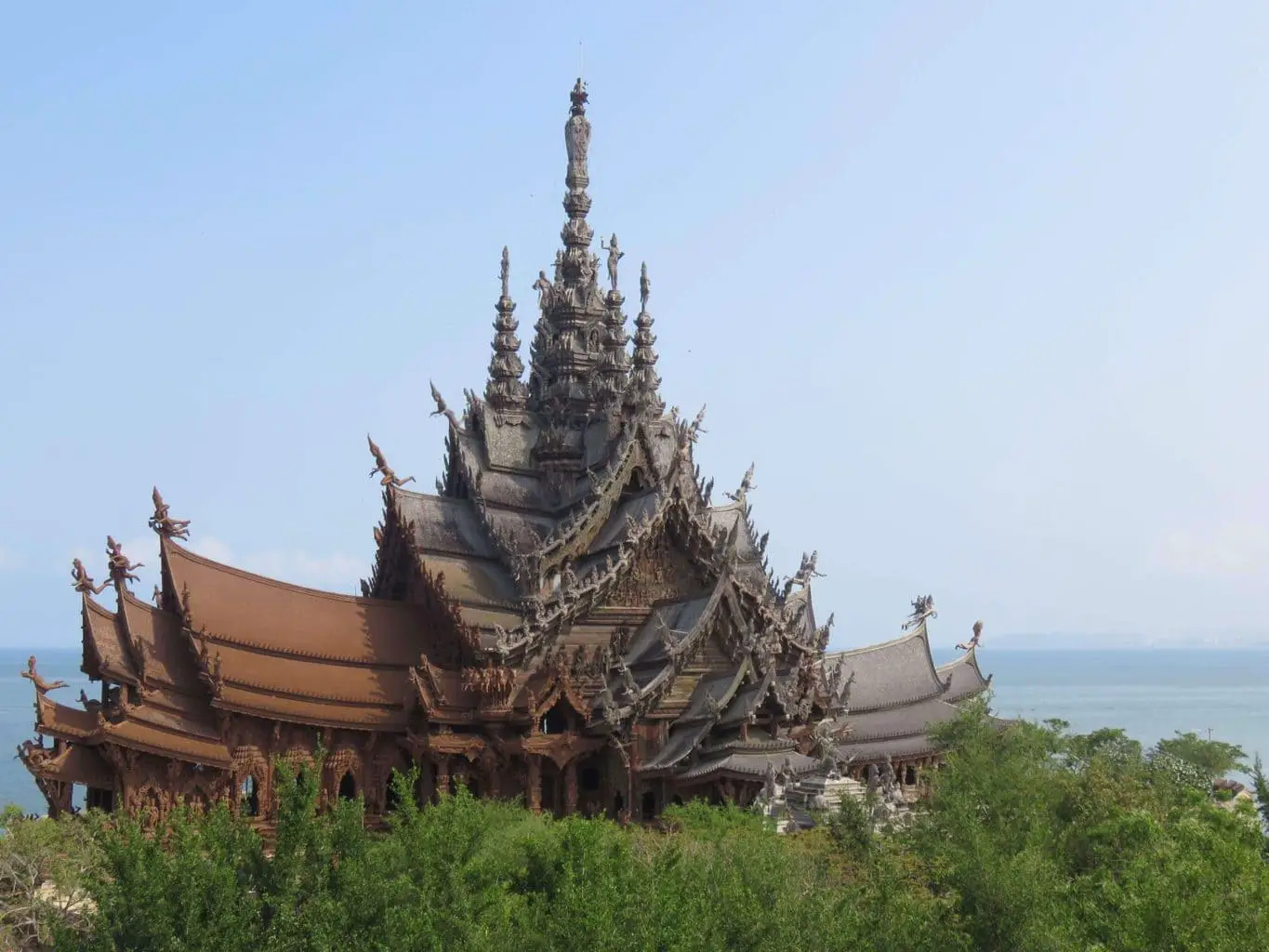
Explored by Kirsty from World for a Girl
The captivating Sanctuary of Truth in Pattaya is one of the most unique tourist attractions in Thailand. A modern-day architectural wonder, the Sanctuary was commissioned by a wealthy Thai businessman in 1981. The ornate building symbolises a commonality between religions through a shared belief in a higher truth.
Set on a peaceful headland to the north of Wongamat Beach on the edge of the ocean, this colossal, wooden structure right on the water’s edge is magnificent. For over 30 years, wood cravers have been carving this intricate and captivating shrine right on the edge of Pattaya’s urban sprawl. The complex is due to be completed in 2050. Wander through the workshops and watch the carvers busy at work.
The city of Pattaya isn’t renowned for its cultural assets and as you enter The Sanctuary of Truth, you may be forgiven for thinking that you’re arriving at yet another awful tacky tourist attraction.
However, once you have passed the paintballing, horse-riding and elephant ride touts, you can’t help but be impressed by this amazing building and the life-size wooden statues and scenes within it. A visit to The Sanctuary of Truth is without a doubt, also one of the most family-friendly things to see in Pattaya.
Phanomrung Temple, Buriram
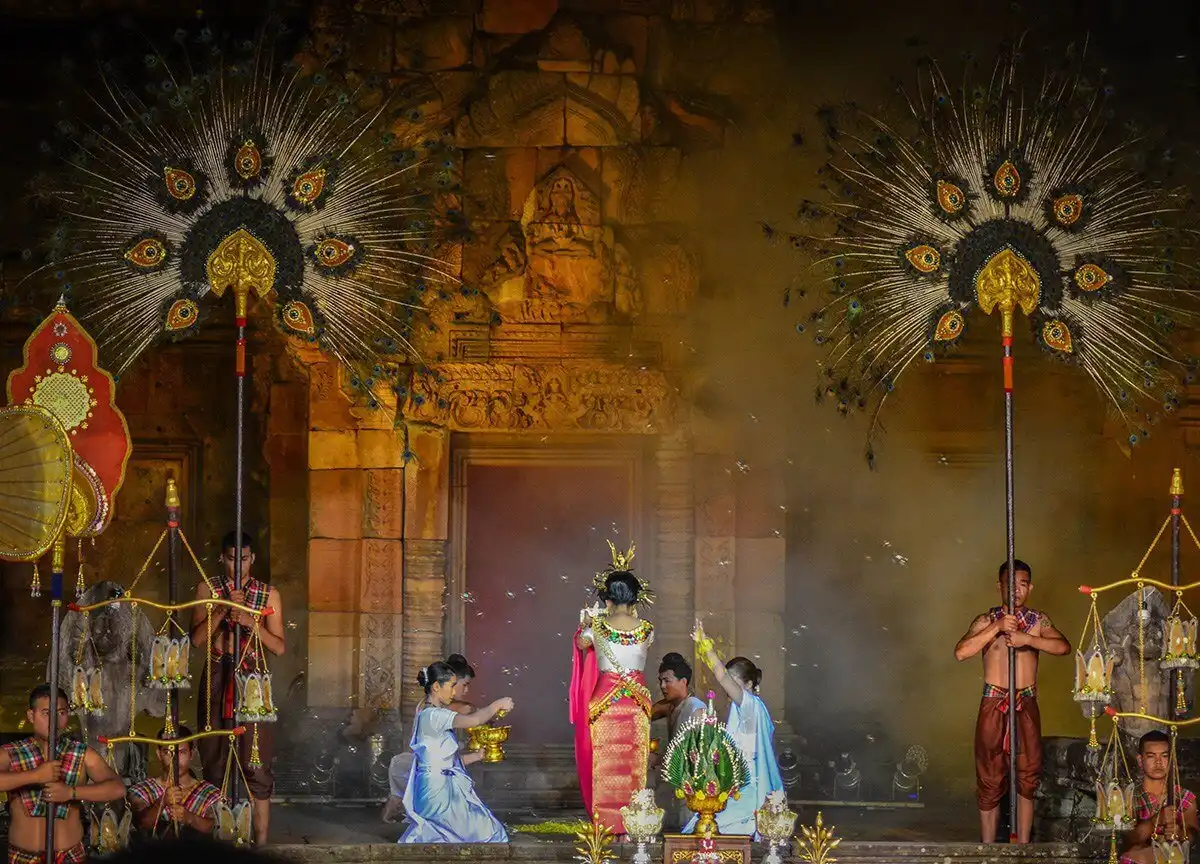
Explored by Allan from Live Less Ordinary
It is common to find the occasion Khmer influences in Thailand, brought by the ancient Khmer Kingdom better known from next door in neighbouring Cambodia. And these tend to follow what is known as the Ancient Khmer Highway, a 225-kilometre road which leads from the famed Angkor Temples of Cambodia and through the Thai borders of North Eastern Thailand aka Isaan.
But the most magnificent of these sites on this side of Thailand would be Phanomrung Temple and the surrounding historical park, located near the smaller town of Nang Rong in Buriram. And it is a somewhat off-the-beaten-track location making it a more serene experience away from the usual tourist paths elsewhere in Thailand.
So the temple itself is located on an extinct volcano overlooking the Thai-Cambodian borders, and it is in reverence of the Hindu God Shiva as many of these Khmer ruins are in the region. And the site is really well preserved with stone pillar carvings and a stairway of serpent heads (Naga) leading up to the upper sanctuary fifteen doorways of the temple.
Fun fact: Each year there is a huge ceremony, known as the Phanomrung Temple Festival, to celebrate the morning bi-annual sunrise when the sun aligns perfectly with the doorways of the temple.
Kong Lan (Pai Canyon), Pai
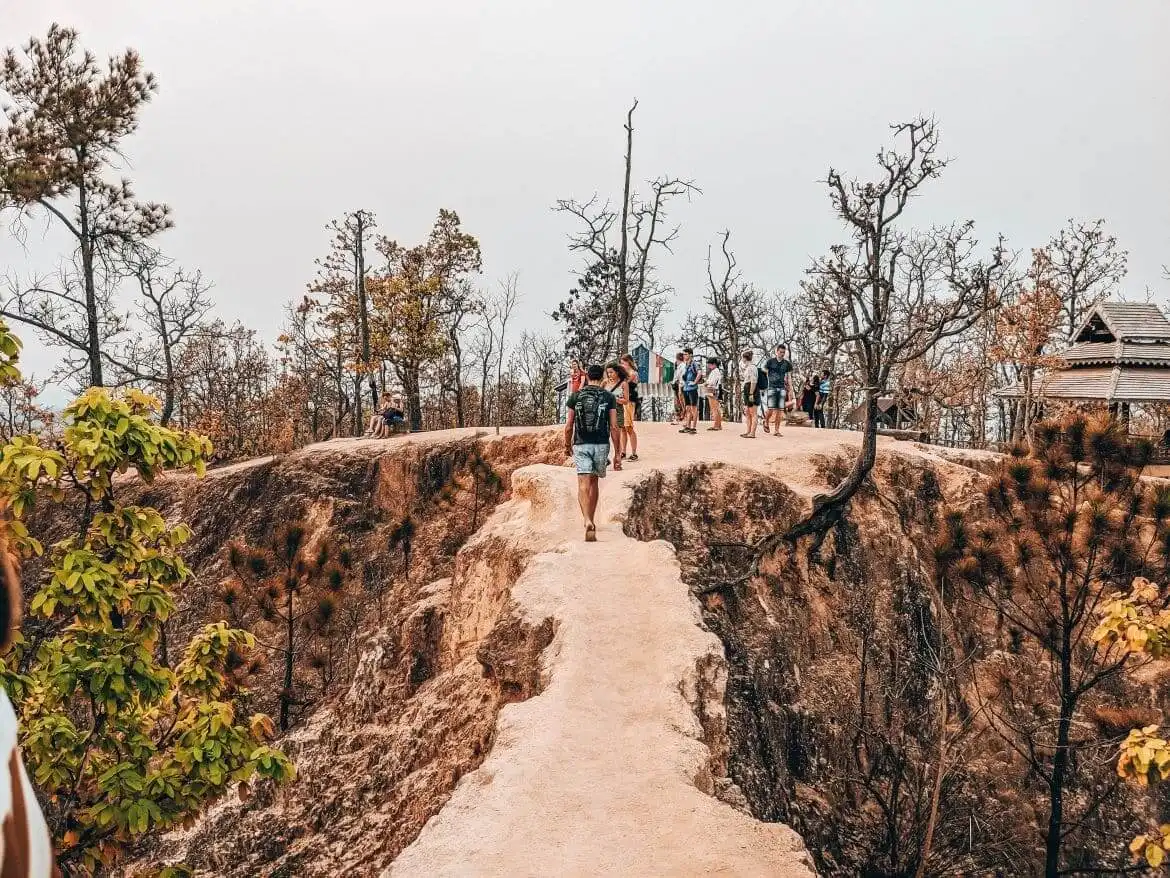
Explored by Lauren and Darren from Faramagan
Pai Canyon is known locally as Kong Lan and is one of the most popular things to do in Pai but also one of the most striking sunset spots in the country. It is located 5 miles south of Pai on the infamously windy road known as Route 1095 which stretches from Chiang Mai and has over 762 hairpin corners.
Admission to Pai Canyon is free and there is ample space to park. Once parked, there is a short hike up paved steps which then open up to an impressive canyon complete with narrow edges and high sandstone cliffs. It is recommended to arrive at least 30 minutes prior to sunset in order to secure a good spot before the crowds and bus tours arrive.
If you have plans to explore more of the canyon and embrace the narrow trails, please do not attempt it in flip flops! The sandstone edges are covered in dust which makes the trails incredibly slippery with sheer drops at parts. Thankfully, you do not need to venture far along the canyon to admire the views. There is no need to risk climbing to a quieter, more photo worthy space as these trails are notoriously dangerous – stick to the start of the canyon. Also, beware when stepping back for a photo as it’s easy to lose footing on the high cliffs or get lost in the beautiful views to realise how high the canyon is.
Insider Tip: If want to avoid the crowds completely, head to the canyon for sunrise – not only will you beat the heat, but you can admire the views without the bus tours and backpackers who’d rather have a lie in!
Sunrise Beach, Koh Lipe
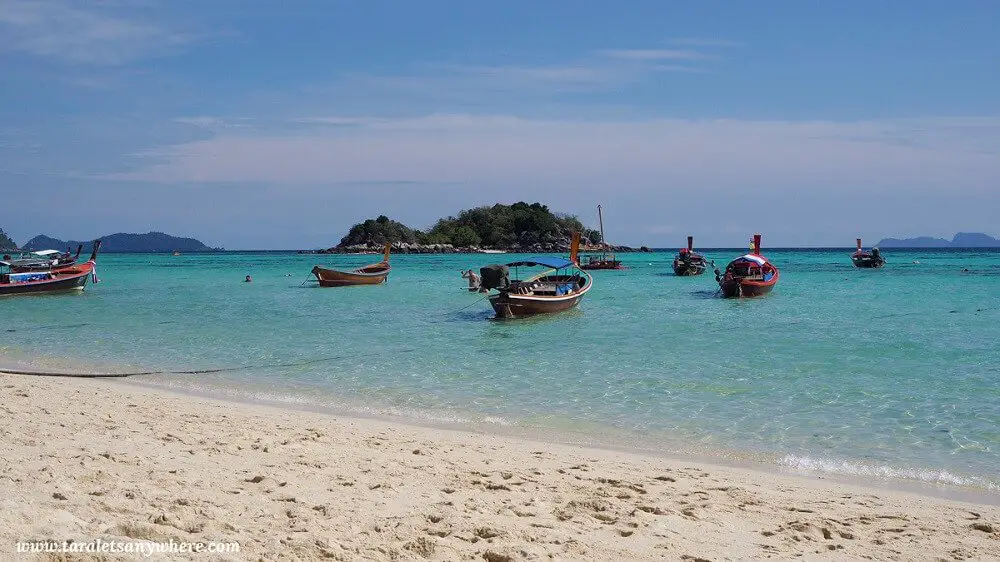
Explored by Katherine from Tara Lets Anywhere
Sunrise Beach is one of the beaches you can find on the quiet island of Koh Lipe, about 60 km south of mainland Thailand. It’s not the only one — there is also Pattaya Beach and Sunset Beach, but arguably it is the most beautiful. It has fine white sand and clear blue water where you can enjoy an afternoon of swimming and beach bumming. You can just lay down on a towel and read a book or enjoy a refreshing fruit shake.
Sunrise Beach is relatively quiet compared to the Pattaya Beach which is used as a port. That saying, you can still find establishments here including beach resorts, bars and restaurants, spas, and more. If you want to wake up with an ocean view, you definitely want to book in a resort along Sunrise Beach.
Koh Lipe is one of the remaining off-beaten destinations in Thailand. Still, it’s best to book your stay here in advance especially during peak season and holidays.
Phu Chi Fa
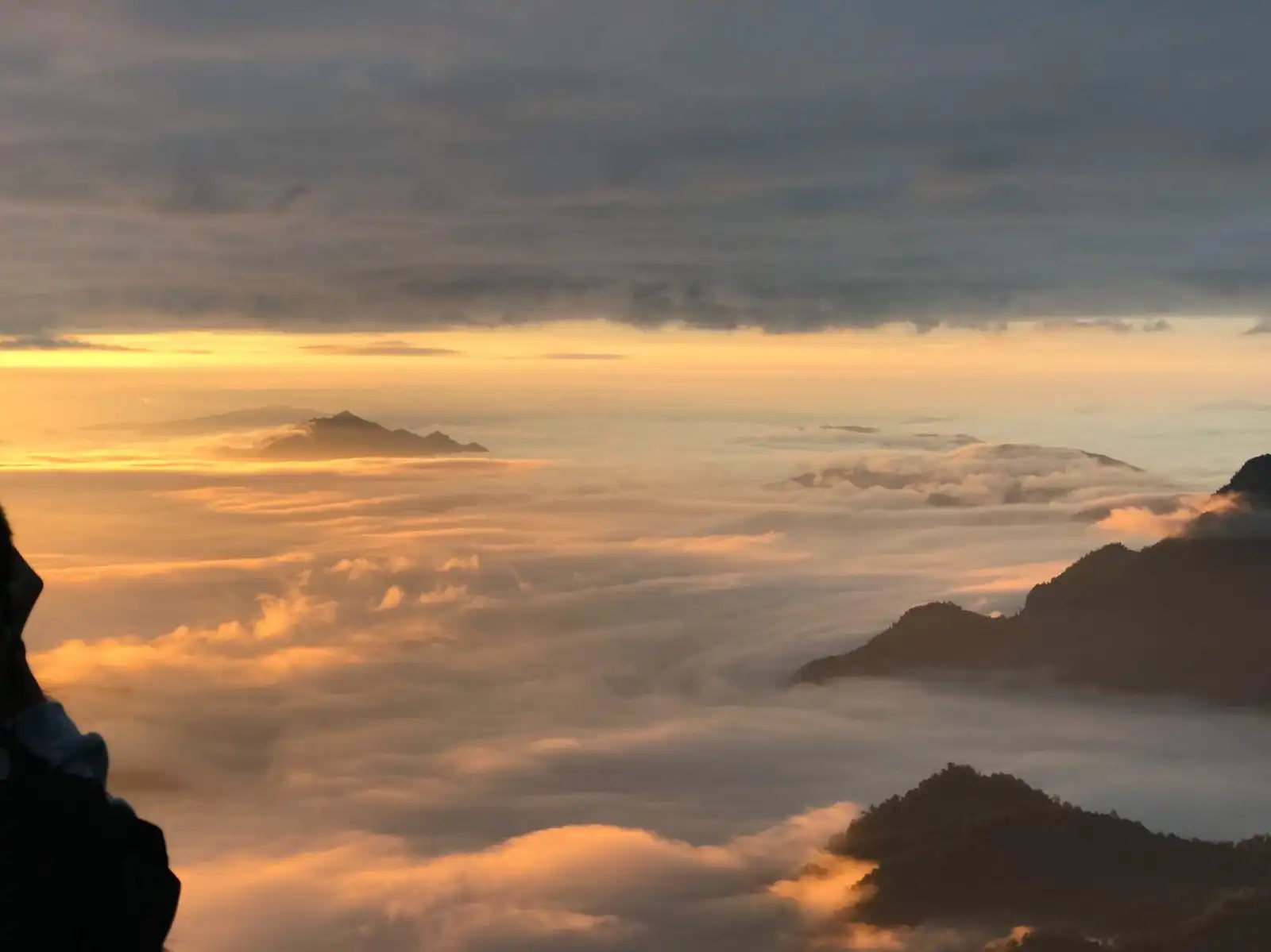
Explored by Ben from The Sabbatical Guide
Phu Chi Fa is the best place in Thailand that you’ve probably never heard of! It is a located in the extreme north-east of the country in Chiang Rai province, and is a two hour journey by road (90km) from the city of Chiang Rai.
So why would you want to visit?
Phu Chi Fa is famed for having the best sunrises in Thailand. After a short, but steep trek, the views from the top are simply astonishing. Looking out over the Mekong basin, the valley is often filled with a thick layer of cloud, through which the peaks of the mountain range poke through. When the sun rises it turns the cloud a series of spectacular colours before finally burning off the haze and welcoming the day. On our visit we weren’t lucky enough to witness the low lying clouds, but the views down into Laos were amazing, and if you are a country ‘collector’ you can actually step across the border into Laos at the top.
Wat Doi Suthep (Golden Temple), Chiang Mai
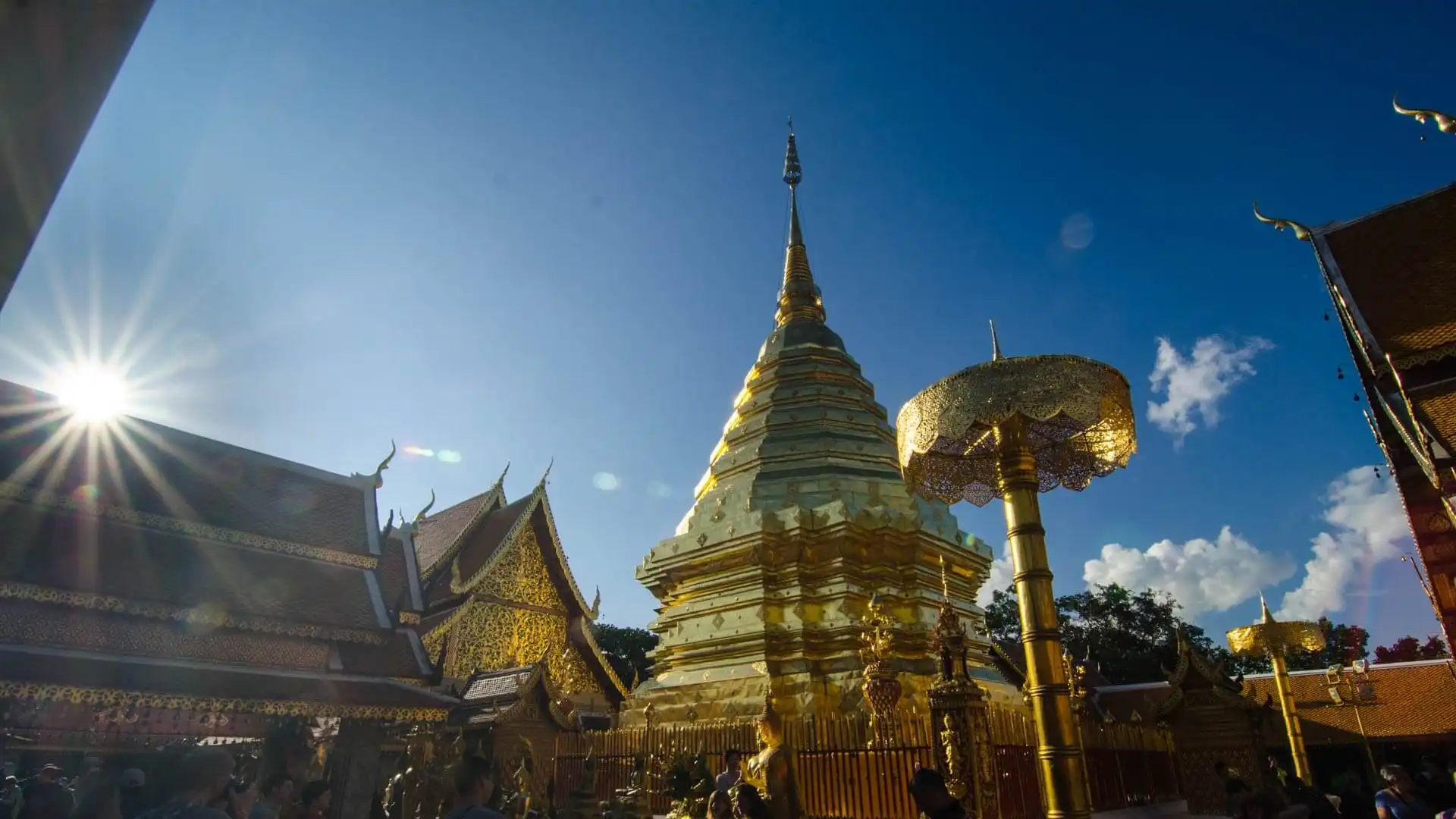
Explored by The Travel Scribes
About 40 minutes out of Chiang Mai is the gorgeous Golden Temple, Wat Doi Suthep; one of the most famous buildings in Thailand. About 300 steps lead you up to the mountain temple, characterized by heavy gold accents and a number of other sights surrounding it.
This beautiful shrine was commissioned by King Kuena, ruler of Chiang Mai from 1367-88. According to an old legend, the king was persuaded to build the temple when the monk Sumana presented him with a bone relic of the historical Buddha.
While you are there, you can do the monk chat at their Buddhism Centre, or visit the large hilltop Hmong village; its one of the best things to do in Thailand. There are even a few waterfalls nearby, to cool off if you like.
The Hellfire Pass (and Bridge over the River Kwai)
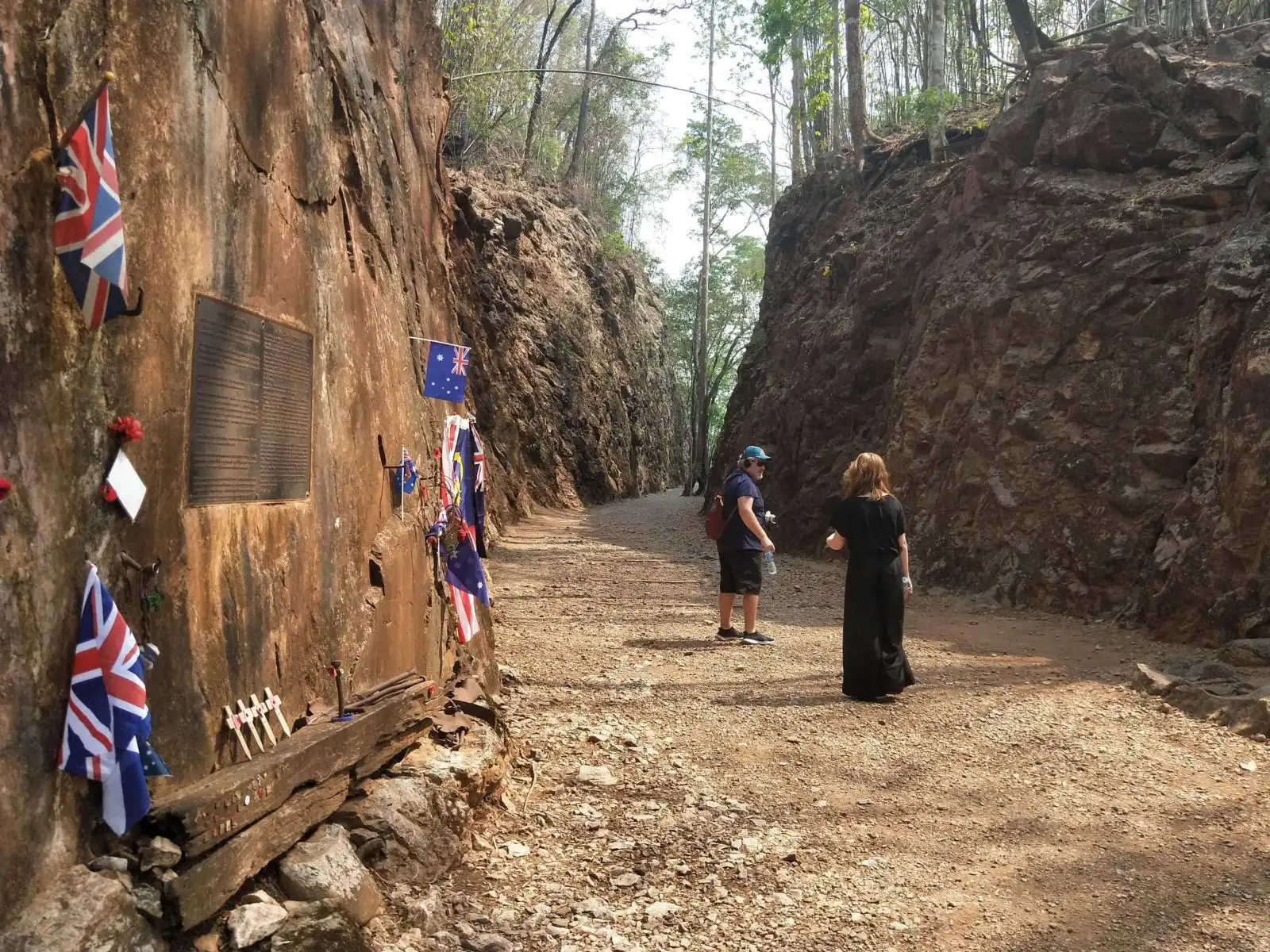
Explored by Bec from Wyld Family Travel
Hellfire Pass or Konyu Cutting to the Japanese in Kanchanaburi Thailand is a section of the Thai-Burma railway that was hand made by forced labor from Allied prisoners of war in World War II. It is otherwise known as the Death Railway.
Just outside of Kanchanaburi the Australian Government in conjunction with the Thai government have set a museum and information center where people can go to learn the history that happened in this part of Thailand. It incorporates the impact the Railway also had on the local people who lived in the area. Hellfire Pass gets its name from the men who saw it – they described looking down at their fellow prisoners of war working by fire light in the night as a scene from Hell itself.
You can visit the museum before taking the path down to the cutting in the rock. It is hard to imagine what it would have been like for the men working to complete it. The heat, the insects that never seem to go away, the rain when it was the monsoon season and the abundant loss of life all around you is something we will never comprehend.
Interesting Fact: The Death Railway is also famous for having a bridge over the river Kwai, which shares a name with the famous film.
Bonus: More landmarks in Thailand
There are just so many special places in the country that didn’t make this list. Here are a few more below but let us know in the comments or get in touch, to suggest some more!
- Khao Yai National Park
- Wat Chedi Luang, Chiang Mai
- Sukhothai Historical Park
- Chatuchak Weekend Market
- Khao Sok National Park
- Wat Saket, Bangkok (Temple of the Golden Mount)
- Wat Phra Singh
Bonus: More landmarks in Asia
Are you interested in more landmarks across the region? We’ve asked some of the best travel bloggers to let us know their favourite iconic places and landmarks in Asia, check out some of the below to see what made the list!
- 21 Iconic building and landmarks in Singapore
- Famous places in Myanmar
- Most iconic buildings and landmarks in Vietnam
- 15 most beautiful Sri Lankan landmarks
- The ultimate Indonesia landmarks
- The top 10 landmarks in China
- Iconic places and famous landmarks in Malaysia
Want to save this for later? Why not pin it…
